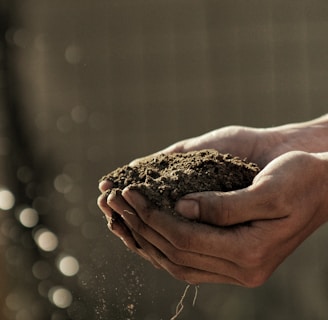An idea of the earth as a petri dish: A microscopic view of our world
A Close-Up on the Interconnectedness of Nature
NATURE
Dr Apada Reddy
11/14/20233 min read


An Idea of The Earth as a Petri Dish: A Microscopic View of Our World
Understanding the Growth and Sustenance of Life
The concept of viewing Earth as a large-scale Petri dish opens a new perspective on how we understand ecological and biological processes. This analogy allows us to explore the similarities between the growth and sustenance of microbes in a controlled environment and the broader ecological systems of our planet.
1. Nutrient Requirements: The Foundation of Life
Earth's Resources as Nutrients: In a Petri dish, microbes thrive on essential nutrients like carbon, nitrogen, phosphorus, and trace elements. Similarly, life on Earth depends on these elements sourced from our atmosphere, soil, and water bodies. They are the building blocks of life, playing a crucial role in sustaining diverse ecosystems.
Customizing for Diversity: Just as agar in a Petri dish can be tailored to specific microbes, Earth's ecosystems provide varied nutrient profiles, catering to the needs of different life forms.
2. Lag Time: The Phase of Adjustment and Evolution
Adaptation and Evolution on Earth: Analogous to the lag time in a petri dish where microbes adjust to new environments, species on Earth undergo a period of adaptation when encountering new or changing conditions. This period can involve evolutionary changes or acclimatization, influenced by factors like climate and available resources.
The Impact of Environmental Changes: The adaptation period is critical for survival, just as it is for microbes, shaping the evolutionary path of species.
3. Log Time: The Era of Rapid Growth
Booming Populations: Similar to the log phase in microbial growth, Earth witnesses periods of rapid growth in humans, animal populations, or plant species under favorable conditions. However, Earth's finite resources, like in a petri dish, can limit this growth, leading to competition and environmental impacts.
The Balance of Resources and Growth: This phase underscores the importance of resource management and the potential consequences of unchecked growth.
4. Decline: The Warning Signs
The Consequences of Resource Depletion: On Earth, the decline of ecosystems or species can occur due to factors like resource depletion, habitat destruction, and pollution. This mirrors the decline phase in microbial cultures, where nutrient depletion and waste accumulation lead to a decrease in viable microbes.
Seeking Sustainable Solutions: Just as adding nutrients can sustain microbial cultures, sustainable practices, and conservation efforts are crucial for maintaining Earth's ecological balance.
5. Sustaining Life: Lessons from the Microbial World
Managing Resources for Longevity: The practice of adding nutrients to sustain microbes in a Petri dish is analogous to the need for sustainable resource management on Earth. Ensuring a continuous supply of essentials like water, soil, and air is key for the longevity of our ecosystems.
The Role of Diversity and Renewal: The importance of biodiversity and ecosystem renewal on Earth parallels the concept of regular subculturing in a Petri dish to prevent decline.
The Balance of Nature and Human Responsibility
Viewing Earth as a giant Petri dish not only highlights the interplay of resources, growth, and sustainability but also underscores the delicate balance that sustains life. While we cannot add resources to Earth as easily as to a Petri dish, the planet's ecosystem has the capability to balance and interchange its resources to sustain life over the long term.
Towards a Sustainable Future
Sustainability, however, is a matter of time and responsibility. To ensure the longevity of the human race, policymakers and governments must curb the greed that leads to resource exploitation. Educating the masses and implementing sustainable practices are pivotal in this endeavor. Only through a collective effort can we maintain the delicate balance that keeps our 'Petri dish' Earth thriving.
6. The Possibility of Human Extinction: A Stark Reality
The Fragility of Our Existence: Just as a microbial culture in a Petri dish can collapse under adverse conditions, human existence on Earth faces a similar threat. The possibility of human extinction is a stark reality that arises from the imbalance in resource consumption, environmental degradation, and neglect of sustainable practices.
Learning from the Petri Dish: This analogy serves as a powerful reminder of our vulnerability and the urgent need for a global shift towards sustainability. The future of humanity depends on our collective actions today, much like the delicate balance maintained in a Petri dish.
Thank you for reading
Dr Apada Reddy Gangadasu, Ph.D.

